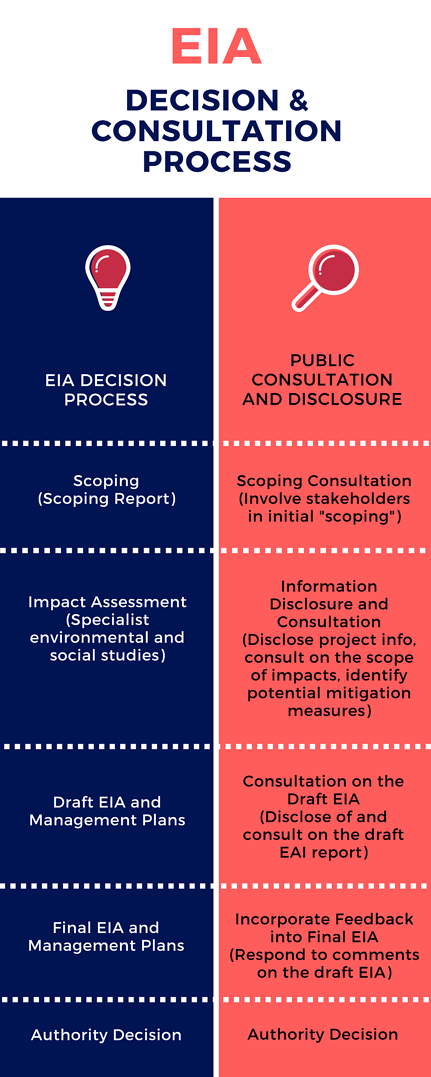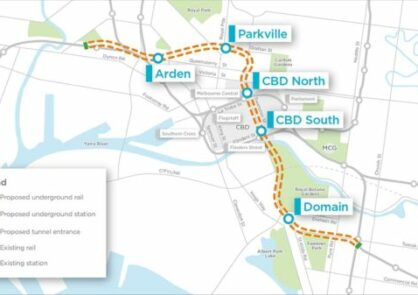What is Public Consultation?
Public consultation is a process that involves the public in providing their views and feedback on a proposal to consider in the decision-making.
Underpinning effective consultation are two key assumptions. Firstly, that the public are perfectly capable of making sense of complex issues. Secondly, those decision-makers are not necessarily experts on the issues for which they are deciding or debating. Evidence suggests that this holds true for the vast majority of cases.
Over the last decade, approaches to public consultation have ranged from short-term programs to meet the regulatory requirements to a longer-term focus on relationship building and proactive risk management. Today, the terms Public Consultation and Stakeholder Engagement are emerging as inclusive and continuous dialogue between a company (or decision-maker) and the public (or stakeholders) that encompasses a range of activities and approaches and spans the entire life of the project.
Who is the public?
The public, often referred to as stakeholders, are individuals and organizations that are affected directly or indirectly by a project or a decision, as well as those who have the ability to influence the decision, both positively and negatively. They can also be people who simply have an interest in the project.
Policy makers and project proponents will often need to strike a balance between consulting those who are significantly affected by a proposal and consulting a wider group of people who will not be directly affected, but who will have a reasonable fear that they might be, or will have strong feelings about an issue. The matter of defining the ‘public concerned’ for a consultation is highly fractious as it is often a factor of the available resources.
Questions that help identify the “public” or “stakeholders”:
- Who is affected by this decision? – For example, the local community, neighbours, landowners, local businesses.
- Who may have influence on the decision? – For example, the centre and local government departments, religious leaders, politicians.
- Who knows about the subject? – for example, the academic community, NGOs
- Who has an interest in the subject? – For example, community groups, groups with special interests.
Why is Public Consultation Important?
“Good consultation costs money but poor consultation can cost a lot more”
Successful public consultation means different things to different individuals and organisations. For some, it means improving their brand image, increased stakeholder support and reduced external risks. For others, it is about meeting regulatory or lender requirements, or gaining broad community support to obtain ‘social license to operate’. Although success may look a little different for companies and organisations operating in different market sectors, most of them agree that high quality stakeholder management and engagement helps achieve better project outcomes.
Benefits of public consultation include:
- It acknowledges the desire for humans to have a say in decisions that affect their lives. More importantly, it provides an opportunity for the affected people (and interested parties) to have a say in decisions that affect their lives.
- It provides the decision makers a better understanding of the stakeholders’ values, interests, issues, and concerns about the proposal to incorporate into decisions and ultimately empowers them to make better decisions.
- It facilitates understanding on the proposal (for the public), and problems and opportunities (for the Consultor).
- It generates new ideas to be considered and evaluated throughout the development.
- It encourages the public to provide meaningful input into the decision-making process.
- It helps create a strong foundation for long-lasting and trustful relationships between the project and the stakeholders.
- It helps organisations enhance risk management and have better project outcomes.
- It informs the public and helps them accept any resulting changes.
When is Public Consultation Required?
Public consultation is oriented towards making decisions
For most sectors, public or private, public consultation is generally required during the planning phase.
For governments, consultation can be applied to a range of topics such as draft legislation and rules, budgets, policy development and spatial planning.
In the case of the European Commission, stakeholder consultations are carried out to support the preparation of:
- Policy communications/white papers
- Legislative proposals
- Spending programmes
- Delegated acts and implementing acts with important impacts, i.e. subject to an impact assessment
- Evaluations of existing policies or programmes.
In the United Kingdom there is only voluntary, blanket guidance for government departments and other public bodies for engaging stakeholders when developing policy or legislation. However, there are legal duties for certain government bodies to consult such as the NHS Act 2006 Section 14Z2 for health commissioning groups and the Planning Act 2008, which requires pre-application consultation on nationally significant infrastructure projects.
Specific legal obligations may also be straddled by a number of non-specific statutory requirements such as:
- The need to carry out environmental impact assessments
- The need to carry out equality assessments
- Freedom of Information and Data Protection Laws.
There are different public consultation and disclosure standards set by the regulators and borrowers for the private sectors. And the consultation requirements can depend on the level of anticipated social and environmental risks and impacts a project is likely to create. For example, the Equator banks (borrowers) require projects with potential significant adverse impacts in non-OECD countries to undertake vigorous consultation and disclosure activities throughout the project’s lifecycle to the bank’s satisfaction that the project has adequately incorporated affected communities’ concerns.
It is important to note that when consultation activities are driven by rules and requirements, the consultation rarely extends beyond the planning phase and is seldom integrated into the core business activities. Over the last decade, approaches to public consultation have chance from short-term means of meeting the regulatory requirements to a longer-term focusing on relationship building and proactive risk management.
Public Consultation and Participation in EIA
The most intense period of planned public participation will likely take place during the feasibility and EIA process, which will help determine whether or not to proceed (by project proponent, sponsors and the regulator) with the new project. Most information about stakeholder concerns, issues, and opportunities are often collected from targeted consultations directly related to the EIA studies.
A typical public consultation and disclosure program for EIA
How to Conduct Public Consultation
There is no one right way of undertaking public consultation
The nature, scale and frequency of consultation should be relative to the level of risks and potential impacts the proposal is likely to create.
Ideally a good public consultation process will be:
- Targeted at those who most likely to be affected by the project
- Early enough to scope key issues and have an effect on the project decisions
- Informed, meaningful – disclose relevant project information in an understandable format and the techniques are appropriate to the local culture and customs
- Two-way so that both sides have opportunities to exchange information, listen, ask questions, and have their issues addressed
- Inclusive of gender
- Localised to reflect the local timeframes, context, decision making process and languages
- Free from manipulation and coercion
- Documented to keep track of who has been consulted and key issues raised
- Report back to stakeholders in a timely manner on consultation outcomes and next steps
- Ongoing throughout the project life
To learn more about what a good public consultation process looks like, read our blog post on Key Principles of Good Public Consultation
How to Identify the right level of public consultation
Not all public participation is the same; there are numerous levels at which you might wish to engage with the public based on the project, the stakeholders, and the decisions to be made.
To identify the appropriate level of public participation for your project, the ultimate question to answer is:
How much potential influence on the decision or action are you willing to provide to the public?
The answer to this question is critical to the design and ultimate success of your public participation program.
The International Association for Public Participation (IAP2)’s Public Participation Spectrum is a useful guide in helping organisations determine which approach and techniques are most suitable for their projects. Small projects with minimum impact may only require engagement at the “inform” level while projects with high potential significant adverse impacts may adopt a more sophisticated approach to effectively reach the engagement goals.
To learn more about what a good public consultation process looks like, read our blog post on Key Principles of Good Public Consultation
How to Create a Public Consultation and Disclosure Plan
The purpose of a Public Consultation and Disclosure Plan (PCDP) is to describe a company’s strategy and program for engaging with the stakeholders, whether it is for a single project, a range of operations or for the entire organisation. It is a process that provides opportunities for stakeholders to express their issues and concerns about the proposal, and allows the company to consider and respond to them. The goal is to ensure timely provision of relevant and understandable project information and encourage the public to provide meaningful input into the decision-making process for better project outcomes.
Click here to see an example framework for a PCPD
Public Consultation vs Public Participation
In general, public participation is another term that is used for public consultation (and stakeholder engagement). Broadly, both these terms refer to a process of involving the public (stakeholders) in providing their views and feedback on a proposal to consider in the decision-making.
Although most people use these terms to describe the same process, some may say that ‘consultation’ and ‘participation’ are two forms of interaction with interested members of the public. In detail:
- Consultation means actively seeking the opinions of interested and affected groups. It is a two-way flow of information, which may occur at any stage of a project development. It may be a one-stage process or, as it is increasingly the case, a continuing dialogue.
- Participation means the active involvement of interest groups in the formulation of decisions or solutions. On the IAP2 Spectrum of Public Participation the ‘participation’ level implies a higher level of public impact on decisions than the ‘consultation’ level.
Even for people who consider ‘consultation’ and ‘participation’ as separate forms of interaction with stakeholders, most agree that these forms of interaction are often mingled with public consultation programs, complementing and overlapping each other.
Public Consultation Management Systems
Having a consultation ‘log’ helps answer basic (but important) questions about the stakeholder engagement activities: Who has been consulted about a particular issue? Where and when did consultation or engagement activities take place? What were the results? More importantly, did the team make any commitments? Have they been followed up on?
The benefits of having a public consultation system are many. It may be part of the regulatory or lending requirements, or an effective tool to demonstrate that the company listens to the stakeholders and incorporates their feedback in the project outcomes. Some other advantages of having a stakeholder management system are:
- Increase transparency on your stakeholder engagement activities
- Better manage stakeholder expectations by ensuring consistency in key messages
- Help make sure commitments and promises are followed up in a timely manner
- Better share stakeholder information as well as knowledge about stakeholders across the company
- Help make informed and timely decisions on matters that are important to stakeholders that would support the social license to operate
- Help companies avoid and manage legal disputes by providing accurate, reliable records of consultation.
How sophisticated the documentation system depends on the scale and nature of your project. It can range from a simple excel spreadsheet, an access database, to a more sophisticated stakeholder engagement software tailored for your needs. See below for some advice on how to select the right system for your needs.
How to select the right public consultation database
When it comes to a time where you need a stakeholder database or consultation software, trying to decide what stakeholder management database to employ can be hard and a little confusing. You want something that works best for your current needs but is also easy to be expanded/ downgraded in the future. We’ve put together a simple flowchart to help you navigate through some of the basic considerations.
Get in touch
We’re always happy to share our knowledge and expertise. Get in touch and let us know what you think of the resources on this page. If you are interested in some advice, having us create more useful resources, or to find out more about the terrific software we have created for public consultation, please get in touch!





